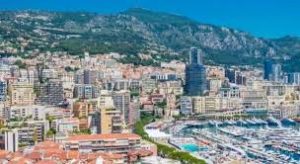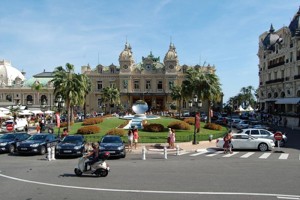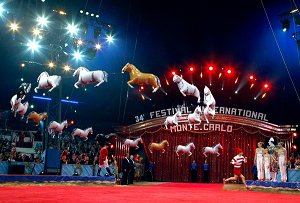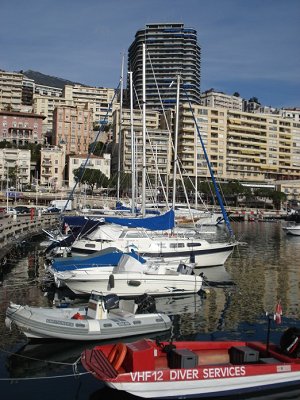About the tax-free system and the construction boom
 For the first time, the principality seriously thought about the possibility of a financial catastrophe in the twenties, when the decline of the gaming industry sharply reduced the income of the dwarf state.
For the first time, the principality seriously thought about the possibility of a financial catastrophe in the twenties, when the decline of the gaming industry sharply reduced the income of the dwarf state.
Jules Richard – as it turned out, a connoisseur of the local economy – willingly undertook to talk about how the principality managed to get out of a difficult situation.
We sat at the table of a small cafe on the promenade of Monte Carlo. My interlocutor sipped a beer from a tall glass and began like this:
– The prescription drug was found in a law containing two articles: the first one said that Monegasques living in France are subject to the tax system of France, not Monaco; the second article said that the French living in Monaco are subject to the laws of taxation of the principality and do not pay taxes to France.
Jules Richard paused and added:
– At first glance, there was nothing special in the law. But with one “if,” if taxation existed in Monaco. And it was precisely in the principality that they canceled it …
Bankers, financiers, industrialists poured into a country where there are no income taxes. On the facades of the houses of Monte Carlo, La Condamine, Monaco, numerous signs were dotted. Capital flowed into the principality as a river, and at the same time incomes grew not only of foreign entrepreneurs, but, of course, of the principality itself.
– Where are all these firms and trusts located here? – I was surprised. – Monaco’s area is only one and a half square kilometers! (In Monaco they always say 150 hectares, but this verbal trick doesn’t change matters.)
– That’s just the thing. A new problem was born. It was decided to take the territory by the sea, As a result, 40 hectares were recaptured. But to create new embankments became more and more expensive, after two decades of “offensive” at sea, the depth near the coast was already 35-40 meters. To get out of the situation, they began to build up, not too reckoning with the landscape and architecture of the city. Here, take a look at these monsters!
On the coast of the bay, a dozen or two skyscrapers of glass and concrete were raised one hundred meters up.
“Do you know how much revenue comes from building one such tower?” At least one hundred percent! This is hardly where you will meet. The Solar Tower skyscraper, for example, cost the construction company 20 million francs, and was sold twice as much …
The phenomenon, however, is quite typical for Western countries. When housing is not enough, demand for it is great, businessmen warm their hands on this, inflating apartment prices. And of course, few people care about the aesthetics of development.
The country has become a mecca of businessmen, a large financial center. No tax was levied on the ever-increasing income of companies based in Monaco. Neighboring countries, primarily France, didn’t like this: the firms “escaped” to the principality, and the state treasury lost the statutory payments. Things almost got to war. Jules Richard at that time worked in the branch of one of the French companies located in Monte Carlo.
Construction boom in Monaco— “It happened in 1962,” he says. – The fate of Monaco hung in the balance. French President General de Gaulle threatened the principality to turn off the electricity and water supply, if it does not stop attracting bankers and introducing income tax. 80 guardsmen of the Royal Palace and 207 police officers of Monaco were alerted. Fortunately, war did not happen. The prince made concessions …
It is impossible to talk about the dwarf state and not to mention its status. The Principality of Monaco is a constitutional monarchy. He has his own flag, coat of arms, there is a parliament numbering ten dozen people. And yet there is no state as such. According to the French-Monaco treaty, the Prince of Monaco is obliged to govern the country, strictly conforming to the interests of France.
The dependence of the principality on its neighbor and patron is felt in everything. There is no need to go far for an example. At noon, tourists gather at the Royal Palace. They come to see the guard’s divorce. It is produced by soldiers in Monegasque uniform – French citizenship. The fact is that in Monaco there is no military duty, and the prince usually asks the French government to allow him to take on the service to protect the state of French citizens. And 82 Frenchmen – the whole army of the prince – receiving a decent salary from the state treasury, faithfully serve the princely court. By the way, Monaco is the only country in the world in which a military band has more armed forces: it has 85 musicians.
“Do you want to know how much the institution of a monarchy costs?” – Jules Richard asked me. – Only 4 million dollars are spent annually on the maintenance of the 180-room palace. However, about the same amount spent on advertising local products …




